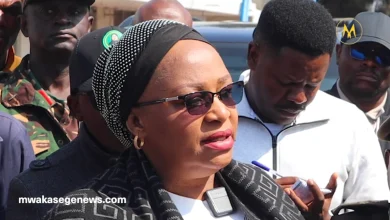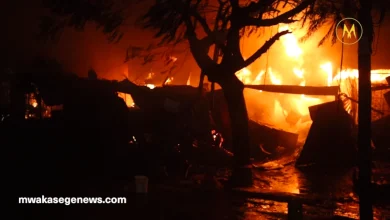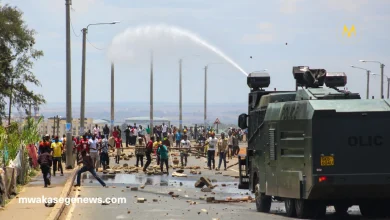Rift Valley Erupts: Death, Violence, and Looting Mar Protest
Rift Valley in Chaos: Protest Violence on June 25
Advertisement

Tensions flared in Kenya’s Rift Valley after peaceful Gen Z commemoration events escalated into violence. Grieving youth turned confrontational. Police and protesters clashed violently. Burning buildings and gunshots marked several counties. A tragedy demanded clear reporting.
From Peaceful Tribute to Deadly Clashes
Advertisement
They assembled in Nyandarua, Molo, Nyahururu, Narok, and Nakuru. What began calmly soon shattered into chaos. In Nyandarua, police opened fire. Eyewitnesses say a police officer shot him in the chest at close range.
James Macharia, a protester, said:
“We were with him during the peaceful protests when the officer shot him”.
Anger surged. Protesters torched the Ol Kalou Police Station, symbolizing distrust toward law enforcement.
Multiple Counties Feel the Fallout
- Nyahururu:
Two youths suffered serious gunshot wounds—one in the shoulder, another in the buttocks—after police cracked down.
- Narok:
Three young people sustained shots in their legs and arms, though they survived.
- Nakuru:
Tear gas and rubber bullets rounded journalists among the crowd. One photojournalist suffered injuries from a canister hit.
- Molo:
Reports emerged of a 17-year-old killed during the commemoration. Police had not officially confirmed the teenager’s death. Community members insist the youth died amid the chaos.
These coordinated commemorations turned deadly in multiple towns that day.
Protesters Respond with Fires and Looting
Following the Nyandarua shooting, protest rage ignited. Looters seized the moment, attacking shops and government buildings. Panic spread. Businesses shuttered early as sirens drowned the streets.
Firefighters struggled to control the flames. Local officials declared an immediate curfew. The region descended into uncertainty.
Police Crackdown and Official Response
Authorities deployed extra forces across the Rift Valley. Curfews went into effect in Nyandarua, Nakuru, and Narok. Officials claimed they responded to attacker mob violence and looting.
However, eyewitnesses said police used disproportionate force. In Nyandarua, an officer shot a clearly peaceful protester. Local press struggled to confirm with county officials.
Human Cost: Grief and Fear
The human toll weighs heavily on communities. Funerals interrupt daily routines. Parents worry for their children attending protests. Some families report missing relatives. Many fear that a single spark may ignite more unrest.
Advertisement
This wave of violence erodes trust on both sides. Protesters question whether they can express grief without fear. Officials debate how to restore order without inflaming tensions further.
Why This Matters Now
This unrest shows fractured trust. Gen Z had hoped to spark reform. Instead, mournful gatherings morphed into violent flashpoints. The deaths reignite calls for police reform and judicial reviews. Global observers ask whether Kenya will learn from past protests—or repeat them.
Protesters argue they expressed grief and demanded justice. They did not expect bullets. Police defend actions as necessary to restore order. But when funerals spark more funerals, the cycle deepens.
Lessons and Next Steps
1.Police Training Limits:
Allow mental health prompts, not guns. Non-lethal tactics offer fewer casualties.
2.Dialogue Over Force:
Authorities should open channels with youth leaders before violence flares.
3.Justice on Camera:
Transparent investigations into each shooting may restore some trust.
4.Community Peace Teams:
Mobilize local volunteers trained in de-escalation to support protests.
5.Media Access:
Independent observers—local and international—must report freely to prevent misinformation.
ALSO READ: Gen Z Protesters Storm State House Road in Nairobi’s Historic Uprising
Final Thoughts
Rift Valley’s June 25 events began in mourning. They ended in tragedy and destruction. Kenya now faces a choice: invite more unrest through force—or start healing through dialogue. Leaders must acknowledge pain, address injustice, and restrict weapons in civic spaces. Kenya’s youth deserve a future free from bullets.
FAQs
Advertisement
Emotions ran high during commemoration. Police used live ammunition. Protesters responded with anger, setting buildings ablaze.
At least two youths died in Nyandarua and Molo. Multiple others were shot in Nyahururu, Narok, and Nakuru. A journalist also suffered injuries.
Advertisement








